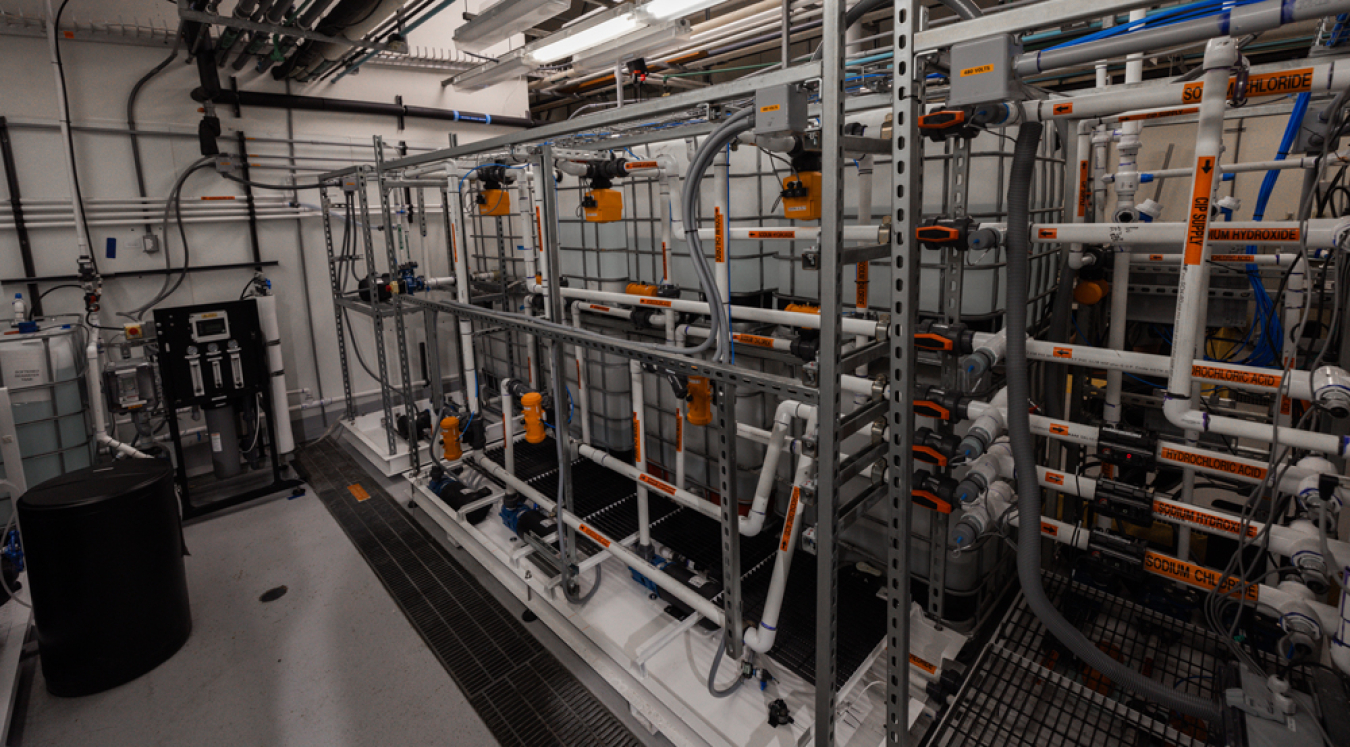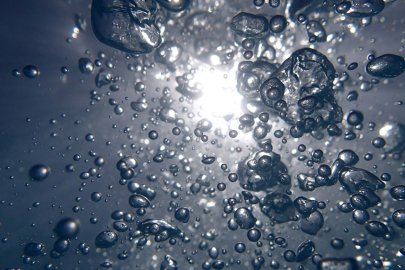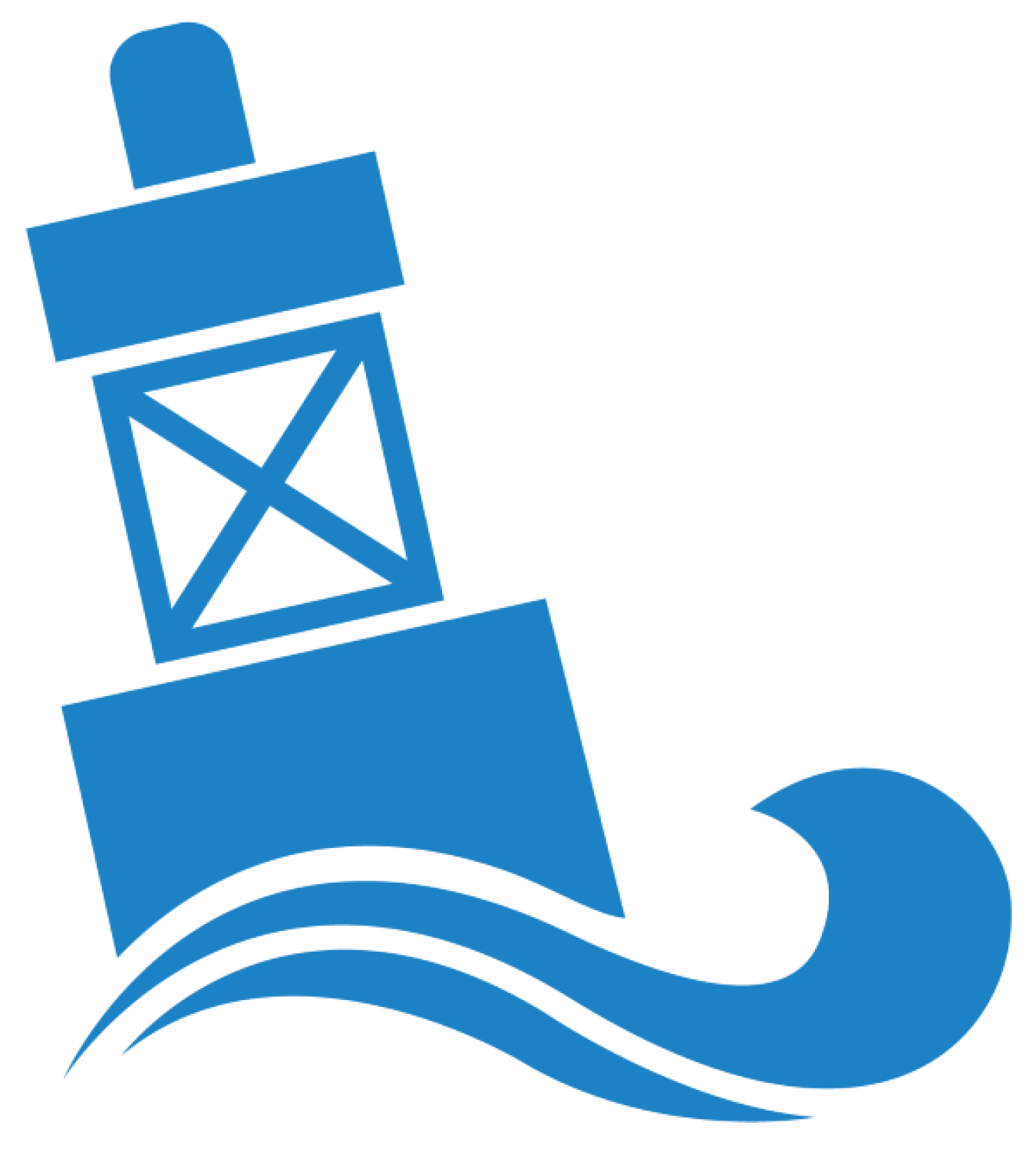A national laboratory-led team deployed a first-of-its-kind marine carbon dioxide removal in Sequim, Washington. The system, developed by Ebb Carbon, is capable of sequestering 100 tons of carbon dioxide per year.
Water Power Technologies Office
March 14, 2024Marine Energy Program
Foundational Research and Development
Project Name: Ocean-Based Climate Solutions
Project Team: National Oceanic and Atmospheric Administration's Pacific Marine Environmental Laboratory (lead), Ebb Carbon, Pacific Northwest National Laboratory, and University of Washington
Lead Recipient Location: Seattle, Washington

The National Oceanic and Atmospheric Administration's Pacific Marine Environmental Laboratory, Ebb Carbon, Pacific Northwest National Laboratory (PNNL), and the University of Washington deployed a first-of-its-kind electrochemical marine carbon dioxide removal (mCDR) system at PNNL in Sequim, Washington, in November 2023. The demonstration-scale unit, developed by Ebb Carbon, is designed to sequester 100 tons of carbon dioxide (CO2) per year, equivalent to the amount of CO2 emitted by 50 cars in a year.
The system uses an mCDR approach called electrochemical ocean alkalinity enhancement. The Ebb Carbon device draws seawater from Sequim Bay and passes it through a series of membranes that separate it into acidic and basic streams. The basic stream can then be returned to the ocean where it can absorb more CO2 from the atmosphere (compared to the ambient seawater) and help mitigate local ocean acidification. However, as the project is still in the early stages, the basic stream generated by the Ebb Carbon system at PNNL is not currently released back to the bay. Instead, it is stored in large holding tanks where it is used for further experiments. Once those experiments are complete and safety is verified, the treated seawater is released back into the sea. This deployment is the first of its kind and the result of a successful public-private partnership involving scientists from multiple federal agencies and academia.

Local, clean energy primarily from hydropower currently powers the mCDR system. However, the team is using simulated marine energy data to understand the potential to power mCDR systems with marine energy in the future, which would further increase the efficiency of the approach. Lessons learned from this deployment will help inform the validity and safety of ocean alkalinity enhancement as a method for mCDR as well as the feasibility of powering it with marine energy.
The team is also using the experimental data to inform models for testing how efficiently the system can increase CO2 capture in Sequim Bay, which is critical to understanding the viability of the specific mCDR approach. Another aspect of the study is understanding the effects of reducing water acidity levels on a variety of marine organisms. The marine species in the experiments include oysters and seagrass epifauna (a critical food source for salmon), both of which are particularly vulnerable to acidification. Through this combination of experiments and modeling, the team hopes to understand suitable system size and operational schemes for future deployments.
Recognizing that scalability of the mCDR approach depends on sustainable use for all output streams from the system, another WPTO-funded project is investigating potential uses for the acidic product stream from the Ebb Carbon system, including for seawater mineral extraction and aquaculture, in an effort to lower the costs and carbon footprint of the overall process.
mCDR technology like this aims to create negative carbon emissions, which is critical to reach the United States' emissions reduction goals as well as those of the U.S. Department of Energy's Carbon Negative Shot. Future work on this project will focus on evaluating how this and other mCDR technologies can best leverage marine energy resources, maximizing negative emissions and climate change mitigation potential.
-
National laboratory researchers designed a potentially more comprehensive and accurate methodology to measure wave energy in the United States and around the world.
-
 A national laboratory-led team deployed a first-of-its-kind marine carbon dioxide removal in Sequim, Washington. The system, developed by Ebb Carbon, is capable of sequestering 100 tons of carbon dioxide per year.
A national laboratory-led team deployed a first-of-its-kind marine carbon dioxide removal in Sequim, Washington. The system, developed by Ebb Carbon, is capable of sequestering 100 tons of carbon dioxide per year. -
 Team develops artificial intelligence-based system that searches for optimal placement and monitors environmental effects of marine energy devices.
Team develops artificial intelligence-based system that searches for optimal placement and monitors environmental effects of marine energy devices. -
 Researchers proved that taking a co-design approach to building a wave energy converter results in a more durable, powerful, and efficient device.
Researchers proved that taking a co-design approach to building a wave energy converter results in a more durable, powerful, and efficient device. -
 National laboratory researchers explore a new laser surface modification approach for marine energy devices to reduce corrosion and biofouling.
National laboratory researchers explore a new laser surface modification approach for marine energy devices to reduce corrosion and biofouling.
WPTO's marine energy e-newsletter shares news and updates on tools, analysis, and emerging technologies to advance marine energy.
The WPTO e-newsletter brings funding opportunities, events, publications, & hydropower and marine energy updates directly to your inbox.


